| Hyundai Rotem J151 | |
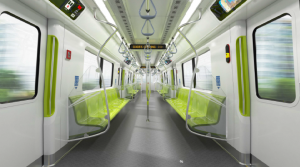 |
|
| In service | 2027 onwards |
| Manufacturer | Hyundai Rotem |
| Number built | 186 vehicles (62 trainsets) |
| Formation | 3 cars per trainset, provision for 4 cars per trainset DM–T–DM |
| Fleet number | 3001 – 3062 |
| Operator | Singapore One Rail (SBS Transit Rail and RATP Dev Asia Pacific Joint Venture) |
| Depot | Tengah |
| Line served | Jurong Region Line (JRL) |
| Technical Data | |
| Car body | Welded aluminum |
| Doors | 6 per car |
| Electrification | Third Rail |
| Track gauge | Standard Gauge (1435mm) |
The Hyundai Rotem J151 train is a light metro electric multiple unit (EMU) train operating on the upcoming Jurong Region Line (JRL). Projected to enter service in 2027, these are the JRL’s first generation of rolling stock.
Sixty-two (62) trains were procured, with each train formed of three cars. Trains were wholly designed and manufactured by Hyundai Rotem Company (HRC) in South Korea, and the company would also provide long-term service support to the future JRL operator as necessary.
The first trains arrived in Singapore in September 2025.
Background
Awarded to Korean rolling stock manufacturer firm Hyundai Rotem Company (HRC) in February 2020, Contract J151 (simply referred to as J151) for the procurement of rolling stock called for 62 trainsets of three cars each, at a total value of S$416.5 million. This is the first time that HRC is supplying new trains for the Singapore market.
Since the JRL infrastructure is built to support 4-car trains, the 3-car J151 trains are capable of being modified into 4-car trains in the future. HRC may also be required to provide long-term service support to the operator of the JRL, as was the case for rolling stock procurement on other train lines.
Features
The J151 trains for the JRL have carriages that are smaller than that of existing heavy rail lines, allowing for greater manoeuvrability on tracks. Each train car will be 18.6 metres in length and 2.75 metres in width, as compared to 23.6 m by 3.2 m on the Circle Line.
To facilitate easy boarding and alighting, each train car will have three wide doors on each side. At a width of 1.5 metres, these doors are wider than trains on existing MRT lines. Trains will also be designed with spaces for wheelchairs and strollers.
On the technical side, JRL trains will be fitted with an onboard backup power supply that allows the train to be driven to the nearest station should there be a power failure, thus improving accident recovery time. JRL trains are also equipped with advanced condition monitoring and diagnostic systems to detect train faults, with some trains being additionally equipped with an Automated Track Inspection system to monitor the real-time condition of the running rail for defects. This enables the rail operator to adopt a more preventive and predictive maintenance regime.
JRL trains are also designed around various existing suppliers of sub-systems (such as train doors) of other trains in Singapore, which allows for a greater commonality of spare parts, and enables more efficient and responsive maintenance support.
Tender
The tender for the Contract J151 Trains closed on 13 June 2019 at 12:00 pm, after being extended multiple times from 8 April 2019, 6 May 2019 and 30 May 2019.
As of the tender closing time, participating companies were:
| S/N | Tenderer | Tender Amount |
| 1 | Alstom Transporte S.A. – Alstom Transport (S) Pte Ltd Consortium | SGD 566,491,507.00 |
| 2 | Bombardier (Singapore) Pte Ltd | SGD 546,619,188.80 |
| 3 | Hyundai Rotem Company | SGD 397,800,000.00* |
| 4 | Kawasaki Heavy Industries, Ltd. – CRRC Qingdao Sifang Co., Ltd. – Kawasaki Heavy Industries (Singapore) Pte. Ltd. – Singapore CRRC Sifang Railway Vehicles Service Pte. Ltd. Consortium | SGD 446,028,000.00 |
Notes:
- * – Discrepancy between words & figure
- The eventual amount awarded to Hyundai Rotem Company as announced by LTA is SGD 416,499,000.00
Train Formation
Every car is identified by a five digit number ranging from 3001x to 3062x, where the last digit x is carriage identifier.
Each 3-car train (Formation: DM1–T–DM2) comprises two Drive Motor cars (DM1 and DM2) at each end, and an unpowered Trailer Car (T) in the middle.
Mock-up Train Display & Online Survey
In July 2021, a mock-up cabin of a Hyundai Rotem J151 Train was displayed at the Land Transport Authority’s Hampshire Office. Members of the public may vote on their preferred designs & colour scheme through an online form by 20 August 2021.
Based on the train delivered to Singapore in September 2025:
- None of the options presented were featured in the actual train (No black edge at all)
- The B1 design for the door pillar colour scheme was chosen
Virtual Tour Video
Freight Transport in South Korea
In May 2023, one completed J151 Train was spotted on haul in South Korea.
Gallery
See Also
References
- Smaller train cars for Jurong Region Line to navigate tight curves in built-up areas – The Straits Times
- Contract J151 Schedule of Tenders Received – LTA
- Korean trains with battery propulsion for Jurong Region Line – Straits Times
- Hyundai Rotem Company Awarded Contract for 62 Jurong Region Line Trains – LTA
- JRL Train Mock-Up Online Public Engagement – LTA
Back to Rolling Stock

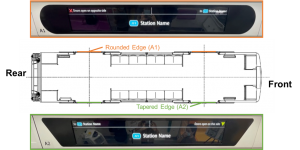

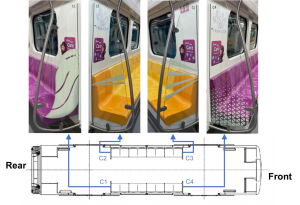
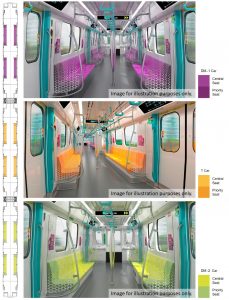
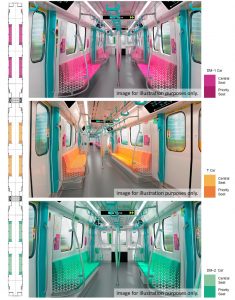




A single operator doesn’t mean it’s cost effective with LTA being the owner,They have to still pay a sum to the operator,Buy new trains and parts..Having 4 operators to compete for bus and rail contracts is definitely way to go else the government won’t introduce the BCM.Who knows with UK & France operator here,SBST & SMRT will be able to bid for Europe bus/train contract in future?We got no natural resource thus the government open up certain business to foreign companies with local incumbents in mind.Open up your mind don’t be a counterfeit bumpkin!SG is not about SBST & SMRT only else they can’t have overseas businesses.
With regards to the rail operator of Jurong Region Line, actually I’m into a single rail operator operating all the RTS lines in Singapore, like the Taipei MRT in Taipei, Kaohsiung MRT in Kaohsiung, and Hong Kong MTR in Hong Kong.
For economies of scale, as well as better coordination and optimisation of resources.
They’re hungry thus slashing lower price..The future Cross Island might be Hyundai too
Of course. This is what a responsible government should do: to optimise resources, so that wastage is minimised, and the productivity is maximised.
Can the authorities implement door opening by pressing buttons, just like Europe? If not, they will repeat the same problem with NSEWL trains where all doors are opened regardless of whether it is necessary. The above-ground stations are unlike underground stations, they do not have air conditioning, therefore is hot and humid. Currently, when trains arrived at stations, even those with low traffic or off peak times, all doors are opened automatically. Combined with our hot weather and those under-strength AC units, and some stations having 40/50 seconds stop time despite low volume, it is annoying that aircon escaped and later you can hear the compressors pumping with very slow effect of recovering the cabin temperatures. Bangkok’s BTS have better and more powerful AC units, even though their weather is much hotter!
There are already platform doors blocking off any contact between the passengers on the platform and the train doors, so there is no need for those buttons.
I’m referring to the cabin Air-conditioning. With or without the PSD.
Good! Interested in knowing who is the supplier for Propulsion System and Battery System…